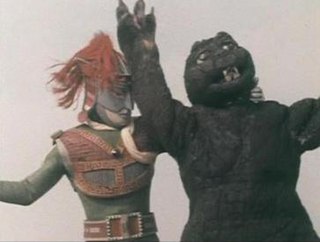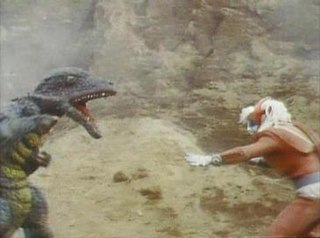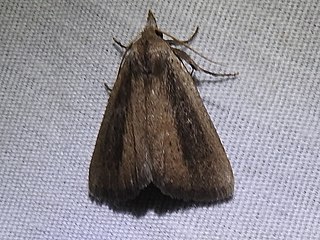
An oak is a hardwood tree or shrub in the genus Quercus of the beech family. They have spirally arranged leaves, often with lobed edges, and a nut called an acorn, borne within a cup. The genus is widely distributed in the Northern Hemisphere; it includes some 500 species, both deciduous and evergreen. Fossil oaks date back to the Middle Eocene. Molecular phylogeny shows that the genus is divided into Old World and New World clades, but many oak species hybridise freely, making the genus's history difficult to resolve.

Wolf spiders are members of the family Lycosidae, named for their robust and agile hunting skills and excellent eyesight. They live mostly in solitude, hunt alone, and usually do not spin webs. Some are opportunistic hunters, pouncing upon prey as they find it or chasing it over short distances; others wait for passing prey in or near the mouth of a burrow. Wolf spiders resemble nursery web spiders, but wolf spiders carry their egg sacs by attaching them to their spinnerets, while the Pisauridae carry their egg sacs with their chelicerae and pedipalps. Two of the wolf spider's eight eyes are large and prominent; this distinguishes them from nursery web spiders, whose eyes are all of roughly equal size. This can also help distinguish them from the similar-looking grass spiders.

All Monsters Attack is a 1969 Japanese kaiju film directed by Ishirō Honda, written by Shinichi Sekizawa, and produced by Tomoyuki Tanaka. The film, which was produced and distributed by Toho Co., Ltd, is the tenth film in the Godzilla series, and features the fictional monster characters Godzilla, Minilla, and Gabara. The film stars Tomonori Yazaki, Kenji Sahara, and Hideyo Amamoto, with special effects by Honda and Teruyoshi Nakano, and features Haruo Nakajima as Godzilla, Marchan the Dwarf as Minilla, and Yasuhiko Kakuyuki as Gabara.

Mário Raul de Morais Andrade was a Brazilian poet, novelist, musicologist, art historian and critic, and photographer. He wrote one of the first and most influential collections of modern Brazilian poetry, Paulicéia Desvairada, published in 1922. He has had considerable influence on modern Brazilian literature, and as a scholar and essayist—he was a pioneer of the field of ethnomusicology—his influence has reached far beyond Brazil.

Godzilla Island is a television show spinoff of the Godzilla franchise. It premiered on October 6, 1997, and ran for a total of 256 three-minute episodes, finishing on September 30, 1998.
John of Gischala was a leader of the first Jewish revolt against the Romans.

The Calpinae are a subfamily of moths in the family Erebidae described by Jean Baptiste Boisduval in 1840. This subfamily includes many species of moths that have a pointed and barbed proboscis adapted to piercing the skins of fruit to feed on juice, and in the case of the several Calyptra species of vampire moths, to piercing the skins of mammals to feed on blood. The subfamily contains some large moths with wingspans longer than 5 cm (2 in).

Go! Greenman is a tokusatsu television series Kyodai Hero kaiju produced by Toho in 1973. It ran from November 12, 1973, to September 27, 1974. It emerged as a follow-up series to Ike! Godman, but the two share no continuity. Compared to the anthology-like storylines of Ike! Godman, Go! Greenman has a single overarching plot.

Go! Godman is a Japanese tokusatsu Kyodai Hero kaiju television series by Toho. It ran from October 5, 1972, to April 10, 1973. It was pulled from reruns on September 28, 1973, and it was replaced by Ike! Greenman.

Gabara is a genus of moths in the family Erebidae. The genus was erected by Francis Walker in 1866.

Gabara subnivosella, the wet sand savannah moth, is a moth in the family Erebidae. The species was first described by Francis Walker in 1866. It is found in North America from Manitoba south to Maryland, Massachusetts and New York.

Gabara distema is a species of moth in the family Erebidae. The species is endemic to North America, specifically the states of Texas, Arizona, North Carolina and Florida.
The primary administrative divisions of South Africa are the nine provinces. The provinces are divided into 52 districts, which are either metropolitan or district municipalities, with the district municipalities being further divided into local municipalities. Metropolitan and local municipalities are divided into wards.

Margarita Abella Caprile was an Argentine writer. Born in Buenos Aires, she was the daughter of Eduardo Abella and Margarita Caprile Mitre; and the great-granddaughter of General Bartolomé Mitre. She attended Colegio del Sagrado Corazon, Buenos Aires. Although she worked as a journalist and wrote travel books, novels, and short stories, she is known primarily as a poet. Since 1955, she replaced Eduardo Mallea as director of the literary supplement of the newspaper La Nación, where she worked until her death. Her contemporaries included Alfonsina Storni, Gabriela Mistral, Delmira Agustini, and Juana de Ibarbourou.

The Scolecocampinae are a subfamily of moths in the family Erebidae. The taxon was erected by Augustus Radcliffe Grote in 1883.

Gabara stygialis is a species of moth in the family Erebidae. It is found in North America.
Gabara gigantea is a species of moth in the family Erebidae. It is found in North America.
Gabara obscura is a species of moth in the family Erebidae. It is found in North America.
In Mandaeism, ʿUr is the king of the World of Darkness or underworld. He is the son of Ruha, the queen of the underworld, and her brother Gaf, one of the giants in the World of Darkness described in book 5 of the Ginza Rabba. Ur is typically portrayed as a large, ferocious dragon or snake. He is represented by the image of a serpent on the skandola talisman.












